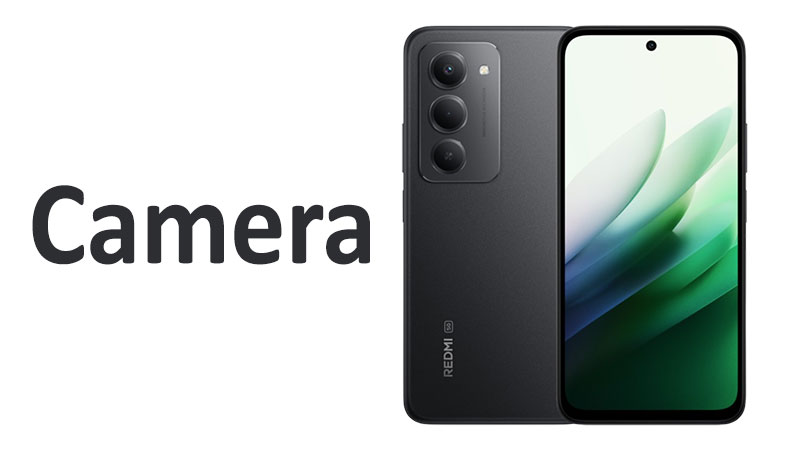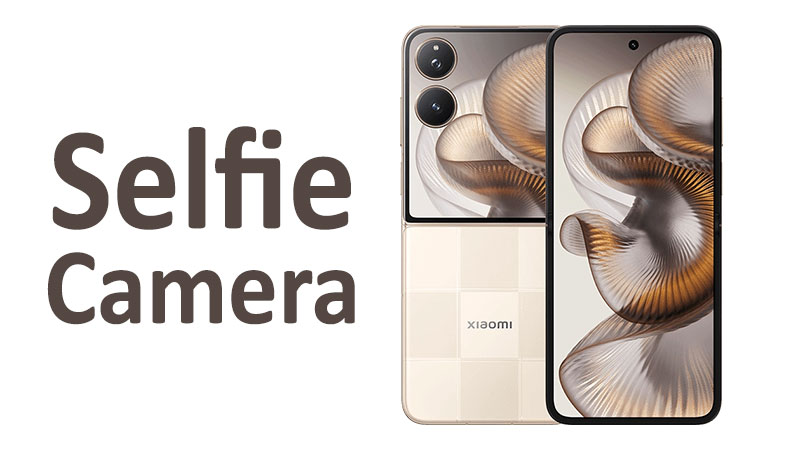The Xiaomi Redmi 15 camera is a key factor for shoppers comparing budget phones. Cameras drive purchase decisions more than ever. A good camera today must balance sensor hardware, lens optics, image processing, and video capability. This article examines the Redmi 15’s camera system in depth. You will find clear specs, hands-on performance expectations, comparisons, pros and cons, buying advice, and a short FAQ. The goal: help you decide whether the Redmi 15 camera fits your needs.
Quick overview: what to expect
The Redmi 15 centers around a 50 MP primary sensor. It pairs that main module with a secondary auxiliary lens. The front camera is modest but serviceable. Video is focused on everyday recording rather than high-end production. Overall, the design targets value buyers who want good stills in daylight and reliable everyday camera features without flagship-level video or stabilization.
Detailed camera specifications
- Rear main camera: 50 MP primary sensor.
- Rear secondary camera: Auxiliary lens used for depth or macro tasks.
- Front camera: 8 MP.
- Aperture (main): Typically around f/1.8.
- Video: Primarily 1080p capture on rear and front.
- Software features: AI scene detection, HDR, Night mode, Portrait mode, basic Pro controls.
These specs position the Redmi 15 squarely in the budget segment. The headline 50 MP figure is attractive. But real-world performance depends on sensor size, lens quality, and software tuning.
What the hardware tells us
A 50 MP sensor is not automatically superior. Sensor physical size and pixel size matter a lot. If a high-resolution sensor uses very small pixels, it can struggle in low light. Pixel binning helps by combining pixels to produce cleaner 12–16 MP images. The Redmi 15 uses this common approach to balance detail and noise control.
The aperture around f/1.8 allows fair light intake in good conditions. However, without OIS, the camera cannot use longer exposure times as effectively. That affects low-light sharpness and handheld video smoothness.
The secondary rear lens is a convenience camera rather than a versatile ultrawide or telephoto. In practice, it helps portrait separation or macro attempts but does not add major framing flexibility.
Image processing and software features
Xiaomi’s camera app on the Redmi 15 includes a standard set of features for the class. These commonly include:
- AI scene detection. Automatically adjusts color and exposure for common scenes.
- HDR. Helps balance highlights and shadows in high-contrast scenes.
- Night mode. Uses computational stacking to improve low-light detail.
- Portrait mode. Simulated bokeh supported by depth data.
- Pro mode. Allows manual exposure, ISO, and white balance adjustments in many regions.
Software plays an outsized role in budget devices. Good algorithms can elevate hardware limitations. Expect Xiaomi’s usual aggressive sharpening and color tuning in automatic modes.
Daylight performance — strengths
Daytime and well-lit environments are where the Redmi 15 shines.
- Detail: The 50 MP sensor captures fine texture and pattern when light is plentiful.
- Color: Tuning favors punchy, social-friendly images. Skin tones are generally pleasing.
- Dynamic scenes: HDR helps retain detail in highlights and shadows for many photos.
For everyday social sharing and casual photography, the Redmi 15 produces satisfying results in daylight. Cropping and moderate editing are feasible thanks to the high native resolution.
Low-light and night performance — limitations
Budget hardware imposes limits. Expect these realities in darker settings:
- Noise: Higher ISO levels lead to visible grain and texture loss.
- Sharpness: Longer exposures without OIS increase the risk of motion blur.
- Night mode results: Night mode helps but is not a full substitute for larger sensors or stabilised optics.
If you regularly shoot dimly lit scenes or indoor events without good lighting, you may notice the Redmi 15 falls short of midrange and flagship phones that include OIS and larger sensors.
Portraits and subject separation
Portraits rely on both depth data and software bokeh. The Redmi 15 can:
- Produce decent subject-background separation for single subjects.
- Occasionally struggle with fine edges like hair or semi-transparent elements.
- Deliver serviceable skin tones and face detail for social use.
For best results, use Portrait mode in stable lighting and avoid overly busy backgrounds.
Front camera (selfies)
The 8 MP front camera is typical for budget phones. It offers:
- Good daytime selfies for social posting.
- Basic portrait or beauty mode features.
- Limited low-light performance and detail compared with higher-megapixel front cameras.
If selfie performance is a top priority, midrange phones often offer better front-facing modules.
Video capture and limitations
Video is where the Redmi 15 noticeably trims capabilities.
- Resolution: Focused on full HD 1080p recording.
- Frame rates: Smooth 30 fps capture is standard.
- Stabilization: Without OIS, expect more shake. Electronic stabilization may improve results but can crop the field of view and introduce artifacts.
If you shoot a lot of video, especially if you need 4K or smooth handheld footage, the Redmi 15 may not meet your needs. For casual clips and social uploads, 1080p remains serviceable.
Comparisons: Redmi 15 vs previous Redmi models
When compared to immediate predecessors and higher-tier Redmi models:
- Versus earlier entry Redmi models: The 50 MP sensor is a clear upgrade in resolution and everyday sharpness. Many older budget Redmi phones used lower-resolution main sensors.
- Versus Redmi Note series: Note-series models tend to offer more camera versatility. They commonly include ultrawide, higher-quality secondary sensors, or improved video specs. Some Note Pro models also include OIS or larger main sensors, improving low-light and video performance.
In short, the Redmi 15 improves still photography for casual users over older entry models but remains behind Note-series devices designed with better camera hardware.
Specialized comparisons: competitors in the same price range
Many budget competitors also adopt 50 MP primary sensors. Differences come down to:
- Secondary lenses: Some rivals include an ultrawide or macro with more practical utility.
- Stabilization and video: A few competitors include OIS or 4K recording even in budget tiers.
- Processing: Brands tune sharpening, color, and noise reduction differently.
When choosing among budget 50 MP phones, test sample images or read camera-specific reviews to judge real-world results. Do not rely on the megapixel number alone.
Pros and cons — camera-focused
Pros
- High-resolution main sensor yields detailed daytime images.
- Good automatic processing produces social-ready photos.
- Simple and friendly camera app with common modes for most users.
- Redmi 15’s excellent battery life means long photo sessions without charging concerns.
Cons
- No optical image stabilization (OIS), limiting low-light and video performance.
- Video capture focused on 1080p, not 4K.
- Secondary lens is limited in utility compared to phones with ultrawide or telephoto.
- Front camera modest for demanding selfie users.
Important buyer considerations
- Define your needs. If you primarily take daytime photos and casual snaps, the Redmi 15 is a strong value. If you need professional-grade video or low-light mastery, look at higher tiers.
- Check regional variants. Camera configurations sometimes vary by market. Confirm the exact model sold in your area.
- Factor in software updates. Camera performance can improve with firmware. Look for manufacturer update history.
- Accessorise when needed. Use a tripod for night shots and a gimbal for smooth video if you demand higher quality.
- Real-world samples matter. Search for camera sample galleries or in-store demos before purchase.
Tips to get the best pictures from the Redmi 15
- Shoot in daylight when possible.
- Keep the phone steady for low-light shots or use night mode with support.
- Use HDR for high-contrast scenes.
- Avoid heavy digital zoom; crop from the main sensor instead.
- Explore Pro mode for exposure control in tricky lighting.
- Update the phone regularly to capture software improvements.
Use-case scenarios and who should buy
- Best for casual photographers who want sharp daytime images and strong battery life.
- Ideal for budget shoppers who prioritize value and social-ready photos.
- Not ideal for videographers who need 4K or stabilized handheld video.
- Not ideal for low-light enthusiasts who demand top-tier night photos without accessories.
Conclusion
The Xiaomi Redmi 15 camera delivers solid value for everyday still photography. The 50 MP main sensor offers a good balance of detail and flexibility for social sharing and casual use. The camera system, however, intentionally limits advanced capabilities. There is no optical stabilization, and video remains focused on full HD capture. Secondary lenses provide limited extra framing options.
If your camera needs are centered on daytime photos, occasional portraits, and easy-to-share snaps, the Redmi 15 is an attractive choice. If you prioritize videography, low-light performance, or multi-lens versatility, consider stepping up to a midrange device or a Note-series model with more advanced camera hardware.
FAQ
Yes. The Redmi 15 features a 50 MP primary rear camera designed for detailed daytime shots.
No. The phone focuses on 1080p video capture for everyday recording.
It performs acceptably for short exposures with night mode, but it is not a leader for low-light photography. Use a tripod for best results.
The 8 MP front camera is serviceable for social media selfies in good light. It is not designed for professional self-portraits.



